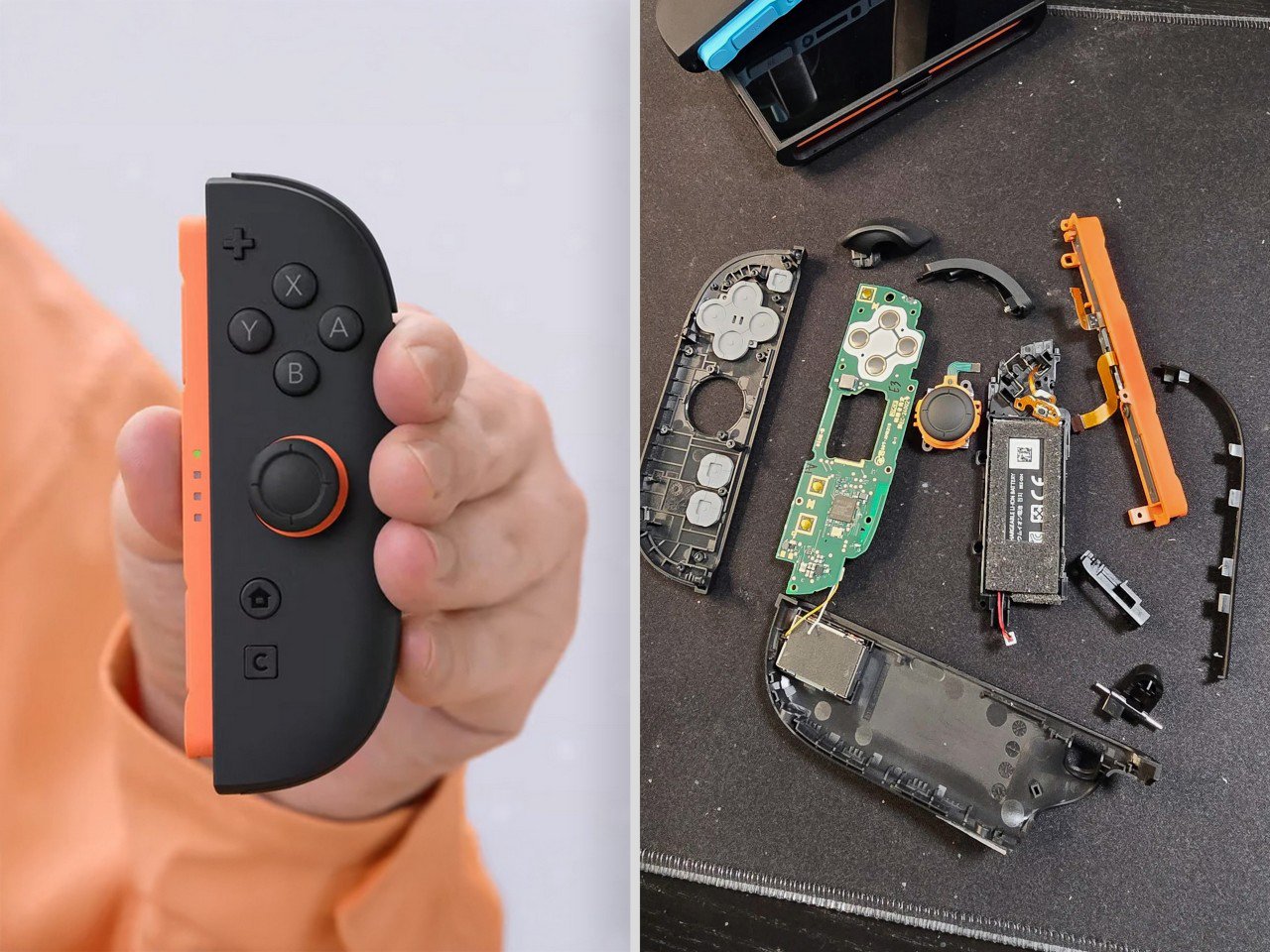It’s 2025, and we’re still talking about Joy-Con drift. Not in past tense. Not as a resolved issue. We’re talking about it because a teardown of the Nintendo Switch 2’s shiny new controllers shows a familiar, almost nostalgic design choice: the same potentiometer-based thumbsticks that turned the original Joy-Cons into warranty nightmares and Reddit DIY projects.
Nintendo claims the sticks are bigger and more durable this time, but the internals still look like a remix of the same old song—plastic sliders rubbing against carbon pads, inviting the same wear-and-tear patterns we’ve seen before. Stick drift wasn’t just a minor inconvenience on the original Switch. It was a flaw so widespread it spawned lawsuits and third-party fixes like the GuliKit electromagnetic joysticks, which completely bypassed the contact-based input system. So seeing a similar build in the Switch 2’s Joy-Cons is like spotting an old leak in a new house. It’s patched, but you still hear the drip in your sleep.
Image Credits: u/moshi_yo
There was a real opportunity here to move on. Hall effect sensors exist, and they’re already a staple in aftermarket mods for players who got tired of recalibrating every few months. Magnetic sensors eliminate friction, meaning there’s no wear point to begin with. They cost a bit more, sure, but in a $399 console that’s aiming for longevity, that cost is an investment. Instead, Nintendo has chosen to double down on refinement rather than reinvention, something people paying upwards of $400 will definitely be a little annoyed about.
What’s more, the teardown shows the same metal dome contact points and similar housing, with minor tweaks to stick housing and spring tension. Nothing suggests a fundamental redesign. If this were a car, we’d be praising the new paint job while ignoring the fact that it still leaks oil after 50,000 miles. And to be fair, drift isn’t guaranteed. It’s a statistical risk, not a certainty. But that’s what makes it worse is that it sneaks up, often outside the warranty window, turning precision gaming into an exercise in frustration.
Nintendo’s defense hinges on improved durability testing, claiming higher thresholds for stress and longevity. But those are internal metrics. Until real-world usage proves otherwise, skepticism will linger. The Switch 2 is already under scrutiny for a scratch-prone display and repair costs that are up to 92% higher than its predecessor. Adding controller reliability to the list doesn’t exactly inspire confidence.
For now, even with people using it for less than 48 hours, the performance leap feels real. Games that chugged on the original Switch now hum along, load times are dramatically better, and the console feels ready for another console cycle. But if the Joy-Cons start drifting again, that progress will be undermined by a very 2017 problem. Nintendo built a new console. Let’s hope they didn’t copy-paste its worst flaw.
The post Stick Drift on the Switch 2? Teardown of Nintendo Console reveals a Potential Hardware Issue first appeared on Yanko Design.

